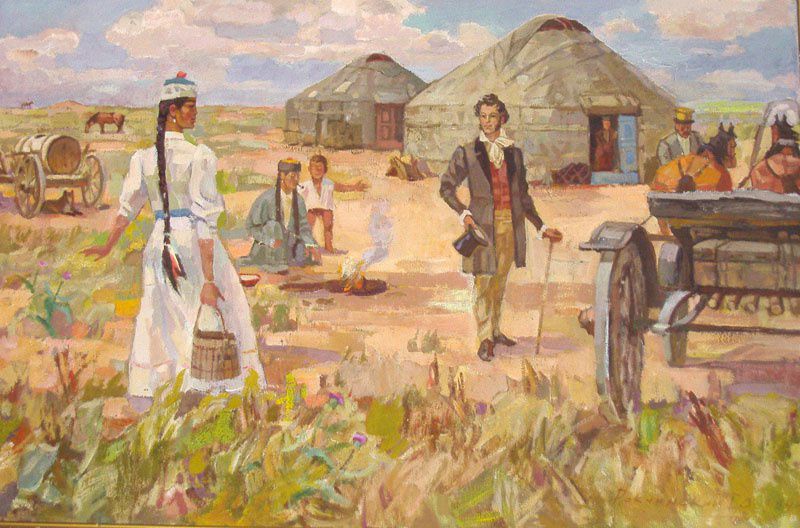As for the colour of the chess board, there were the boards with alternating red-black or red-white squares or even simply vertical and horizontal lines drawn on a monochrome surface. It was possible not to use a board at all, but to draw it on a rock surface with chalk.
In addition, it is necessary to rethink the very approach to the game, because Christians and Muslims also used different approaches to conducting battles and combats, which this game represented originally. For medieval Christians, battles were conceived as a series of endless fighting among small groups, incessant raids, accidental raids; it was not the victory itself that was important to them but the battle process, so they were embarrassed by the very development of the chess game and its final goal to drive the enemy king – to "mat" and overthrow it, which was not particularly accepted.
In addition, they had to redefine and transform according to familiar reality the pieces, from which they understood the king (shah), the rider and the infantryman, but the “fir” (the vizier) aroused many questions so it was turned into the queen. But, a new embarrassment arose as pawns could become queens as they moved along the board, because a king could have several advisors but not wives, thus, pawns that passed the whole board were called "ladies", and only one piece could be called the queen making a pair with the king. The role of the elephant, which often turned into a count, a standard-bearer, a bishop or even a jester had also changed, and the chariot transformed into a tower, etc.
This shows that one thing is certain: chess originated in the East and, above all, the ancestors of the peoples of Uzbekistan contributed to the development of chess idea. Thus, "contemporary rules" were fixed in Europe, and the game takes on a contemporary look only by the 16 century.
A great love of chess among the people and, what is most important, without age restrictions contributed to the creation in March 1996 of the Uzbekistan Chess Federation, which represents chess players of our country in the International Federation (FIDE), the Asian Chess Federation and other international organizations.
Currently, hundreds of thousands of professionals and amateurs regularly play chess in Uzbekistan. And it's not by chance that it was Rustam Kasimdzhanov, our Uzbek chess player, the international grand master who became the World Champion according to FIDE in 2004, is included in the cohort of the world's strongest chess players.
Today, there are 22 international grandmasters in Uzbekistan, including the youngest international grandmaster in the world, 12-year-old Nodirbek Abdusattorov, 4 female international grandmasters and 24 international chess masters.
Based on the ancient chess traditions of the Uzbek people, children of pre-school and primary school age are increasingly attracted to this sport, therefore, our children are becoming the world chess champions.
Judge for yourself, the most ancient chess pieces in the world was discovered in Uzbekistan. They were found during the excavations of the house of a rich city dweller at the ancient settlement of Dalverzintepa in the south of Uzbekistan and date back to the 2nd century AD.
These are miniature sculptures of an elephant (2.4 x 2.9 x 1.8 cm) and a zebu bull (1.8 x 2.2 x 1.9 cm), carved from ivory. The pieces were made in the time of the Kushan Empire, which included the territories of contemporary states Uzbekistan, Tajikistan, Afghanistan, Pakistan and India.
Author: Vice President of the Uzbekistan Chess Federation,
Doctor of Economics, Professor B.K. Umurzakov
 It is believed that the game of chess entered the West in two ways: first, probably not before the middle of the tenth century by the Mediterranean route through the Arab countries, and Spain (where they are first mentioned in the Catalan text), Sicily and Southern Italy.
It is believed that the game of chess entered the West in two ways: first, probably not before the middle of the tenth century by the Mediterranean route through the Arab countries, and Spain (where they are first mentioned in the Catalan text), Sicily and Southern Italy.




















